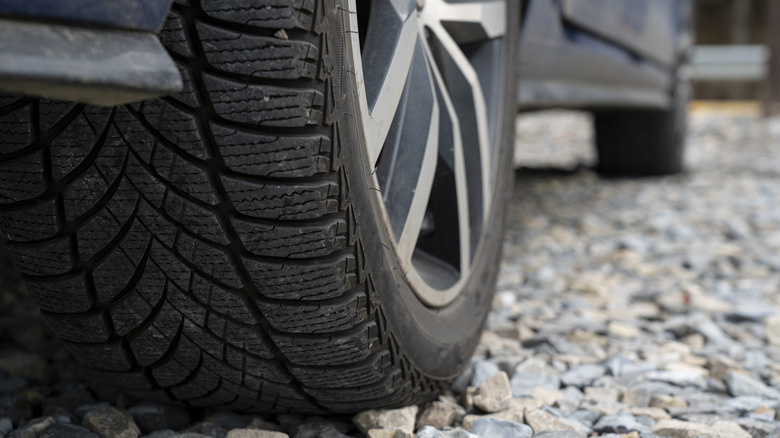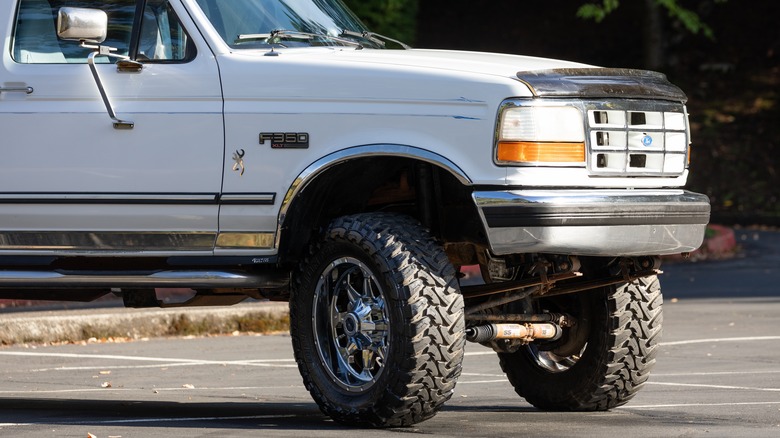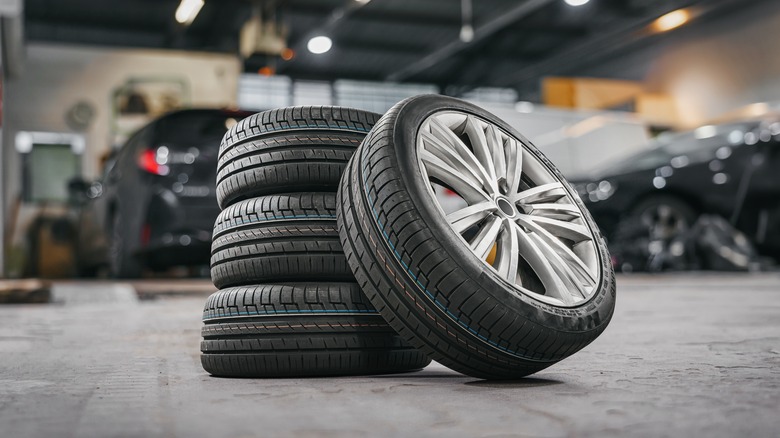What Does LT Mean On A Tire And How Is It Different From A Passenger Tire?
Tires may all seem more or less the same on the outside, but that couldn't be any further from the truth. There are notable differences between major tire brands, but it's even more important to understand the type of tire you're driving on — something you can tell by looking at the designation on your tire's sidewall.
Alongside the long string of numbers that indicate the tire's measurements and ratings, there are also letters that indicate the kind of tire. Most people with regular passenger vehicles will spot the letter P, which means that it's a passenger tire. This is one of the most common tire types, as they're made to work with average sedans, crossovers, and other common commuter cars. These tires are made with economy, endurance, and comfort in mind, with the ability to withstand wet and dry driving conditions and last for long distances.
However, depending on your vehicle type, you may also come across the designation "LT" on the sidewalls, which stands for "light truck." As the name suggests, this label general applies to larger, heavier vehicles, and LT tires have some big differences that are crucial to take into account. Here's what to know about light truck tires and how they're different from passenger tires.
What to know about LT tires
For those seeking a tire that can take it all and then some, light truck tires are the way to go. The specific construction of LT tires is made to withstand harsher conditions and hefty loads, making them suitable for larger SUVs, pickup trucks, vans, and other similar vehicles.
The interior belts and cords used in LT tires are extra strong, providing added levels of support. You'll also notice that their tread patterns are deeper and more defined than those of passenger tires. Combined with their increased size and robust rubber compound, this affords LT tires higher heat resistance, while also making them less prone to punctures. This is why these are highly recommended for those seeking tires that can combat all-terrain conditions.
There are some drawbacks to consider with light truck tires. While long-lasting, they do still require regular maintenance, as all tires do. Due to their size and overall quality, they have increased inflation needs and typically cost more to replace. Similarly, they tend to eat up more gas, as they lack the same flexibility and ease of turning that passenger tires possess. That same stiffness can also make for less smooth and quiet driving.
How to tell which tire is best for you
Now that you now the general distinctions between passenger and light truck tires, how do you go about picking the best option? In general, you shouldn't need to change the tire type your car already has without going to a professional first, except in very specific cases.
The most significant element to consider is the weight your tires will need to support. This is usually pretty straightforward to decipher, but those with larger vehicles such as SUVs or pickup trucks may have trouble deciding which tire is right for them depending on the size of the model. This is especially true if your car needs to carry about excessive loads. To determine the strength of your tires, you can consult the Tire Load Index number on the sidewall, which corresponds to the amount of weight it can support while properly inflated. This is important to keep in mind when buying new car tires.
While it may be obvious that passenger tires shouldn't go on vehicles better suited for LT tires, the reverse is also true for those thinking about giving their Prius a heavy duty upgrade. LT tires are simply not well-suited for everyday, standard driving on highways and similar locations, as they create a harsher ride and can potentially do damage to your car's Tire Pressure Monitoring System. If you're still unsure of what will work for you, consult an auto care expert to guide you in the best direction.


